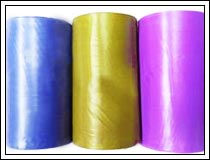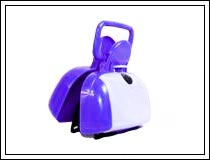Solid Removal
More than half of the contaminants in wastewater constitute of solid particles. Solid contaminants can be divided into organic and inorganic, each of which comes in a wide variety of sizes and can be found in settled, dissolved or suspended state depending on their physical properties. Colloidal components of  wastewater do not fit neatly into a component that can be determined in the laboratory and colloids are found in both the suspended and dissolved solid fractions. wastewater do not fit neatly into a component that can be determined in the laboratory and colloids are found in both the suspended and dissolved solid fractions.
The amount of solid pollutants present in the wastewater gives it the the characteristic frequently termed as its "strength". Actually, the amount or concentration of the organic solids and their capacity to undergo decay or decomposition is the most important part of this strength. The greater the concentration of organic or volatile solids, the stronger the wastewater.
Solid contaminants in wastewater can be categorized as :
- Suspended Solids
- Settleable Solids
- Colloidal Suspended Solids
- Dissolved Solids
- Total Solids.
Treatment
Generally, most of the solid particles can be easily removed using simple methods of sedimentation or filtration and the pollutants recovered as slurry or sludge. Sedimentation is executed with an aim of letting suspended material like clay or silts present in the source water settle by the force of gravity. These suspended particles or floc is created either from material in the water or from chemical used in coagulation or in other treatment processes like lime softening. In this method, the velocity of the water is decreased to a point below which the particles no longer remain in suspension, but settle at the bottom leaving the liquid free from dirt and other unwanted particles in the water. Thus, the velocity no longer supports the transport of the floc or suspended particles, and gravity removes them from the flow, improving the quality of the treated water in the process.

But ofcourse, factors like size, shape type of the particles affect the settling characteristics of suspended particles or floc. Due to their velocity, particles like sand or slit are comparatively easier to remove from water through sedimentation. On the other hand, colloidal material and other small particles do not settle until the material is first coagulated and flocculated by introducing or adding a chemical like aluminum sulfate. Temperature of the water being treated is another factor to consider during sedimentation. The higher the water temperature, the better is the floc settling process.
Very fine solids and solids with densities close to the density of water however pose special problems. In such cases chemicals like alum, lime, ferric chloride, ferric sulfate, chlorinated copper, etc., are added to the water for bringing the finer suspended and colloidal solids into masses of large bulk, thus hastening the settlement process.
|